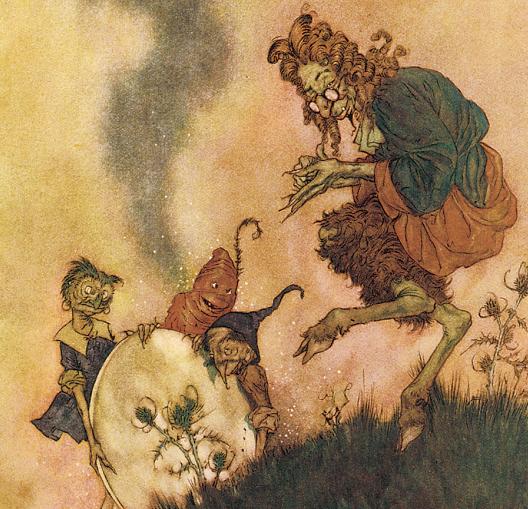Shakespeare gives us some beautiful ‘cute’ names in Midsummer Night’s Dream: Peaseblossom, Cobweb, Moth, Mustardseed and, even the classical-sounding, Titania. However, the one fairy name that we know predates Shakespeare from the Dream, ‘Puck’ is of a rather different type. It is short, muscular and a little bit menacing. Later fairy names range from the aristocratic – there was a nasty boggart called Annabell in the South Pennines, who lived in a barn; to the vivid, Red Cap in the Borders; to the hickish-sounding – in nineteenth-century southern Cornwall, we read of a fairy child called Coleman Grey; to the aristocratic, Queen Mab in Romeo and Juiliet; to the botanical, Old Queen Moss in Greenfield, Saddleworth; to the diminutive, Wee Willie Winkie from the Scottish nursery rhyme; to the petrifying, Bloody Bones. Modern fairy fiction has tended to build on this rich and varied tradition: Sookie Stackhouse, for example, from the HBO series True Blood sounds just right; Peter Pan’s guardian Tinkerbell could have appeared in Midsummer Night’s Dream (she has the character as well); and Nuala in Neil Gaiman’s Sandman series has a pleasant Celtic edge to it. One of the most interesting bits of fairy research in recent years, by Emma Wilby, has shown that fairy names were often similar to the names of witches’ familiars. If EW is correct, and her arguments are persuasive, then we must ask whether witches and fairies were not connected


